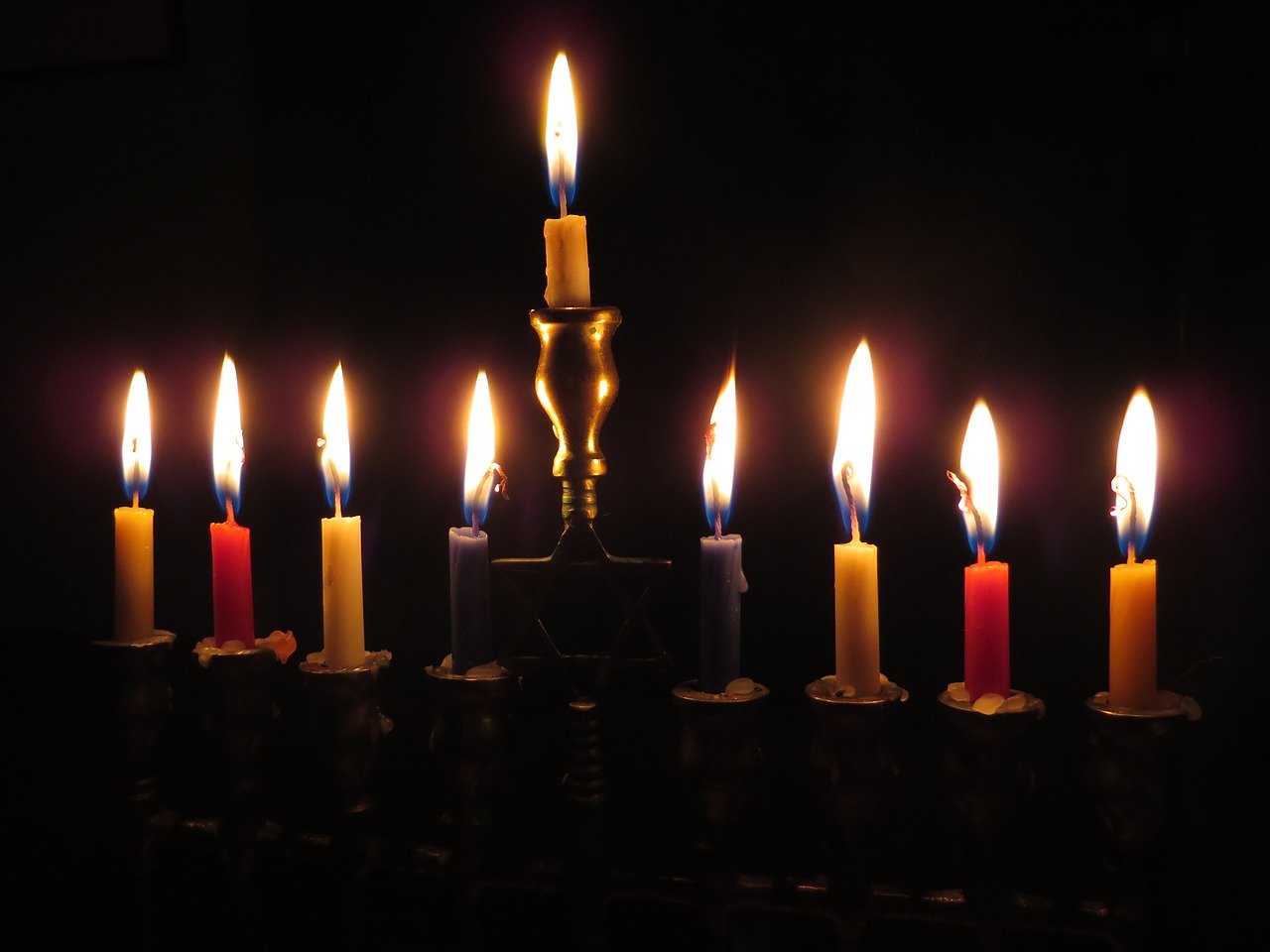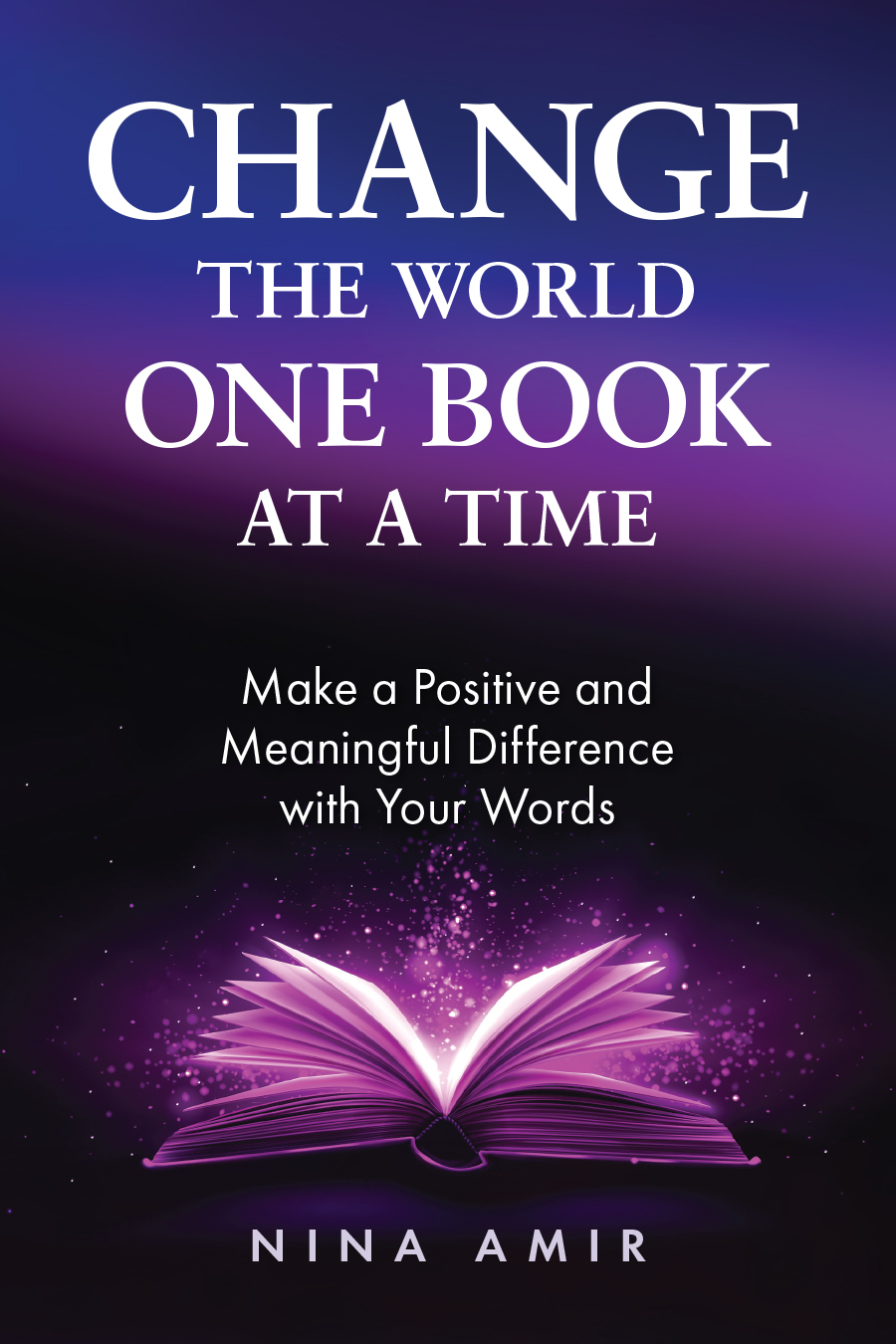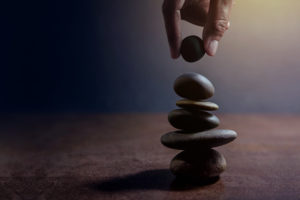 Candlelight. It’s magical, romantic, spiritual, and useful. But there’s more to the light of candles than might meet the eye.
Candlelight. It’s magical, romantic, spiritual, and useful. But there’s more to the light of candles than might meet the eye.
I’m always reminded of this in the winter. Candles are central to the celebration of many winter holidays but to Chanukah in particular.
The story of Chanukah revolves around two main points: The success of a small Jewish army over a large Assyrian one in a fight for religious freedom or, maybe more accurately, against assimilation, and the miracle of the sole jar of oil found in the temple that burned not for one day as expected but for eight during the rededication of the Jewish Temple, which was defiled by the Assyrians.
Thus, the special eight-branched menorah, or chanukiah, provides the primary symbol of Chanukah. While most Jews today light candles in their chanukiah, it’s more traditional to use oil in memory of that small, miraculous jar of oil. Either way, the flame itself holds special meaning, and the Kabbalists, or Jewish mystics, had a special practice of candle gazing that can be especially powerful during this holiday, which is said to hold the energy of miracles. So, today, I’d like to share some information about candle gazing and candlelight.
Last year I was scheduled to give a talk at a New Thought church during the month of December. I asked the participants of a Jewish renewal listserve to share with me their thoughts and wisdom on the subject of “light,” so I could construct a speech that would be relevant to both Jews and Christians alike. Someone shared this information with me, and I’m doing the same in the spirit of “each one teach one.”
I personally love this topic of candle gazing, and I needed a review myself . Doing so allowed me to take the most advantage of the candlelight or light from my one oil chanukiah this year. I hope you’ll find it enlightening and useful, too.
It Starts with the Flame
To begin candle gazing, you have to understand the flame itself. A flame has three parts:
- The inner part of the flame that hugs the wick and consumes the oil is the chashmal, the black or dark blue part of the flame. It represents the physical world, because of its physicality, its action of burning, transmuting and consuming the oil or the wick.
- The main body of the flame is the aish or fire. It provides the principle source of light to the word around the candle; as such it is the spiritual element of the candle. It represents the Light of God. In Kabbalistic terms, we God created the world the Infinite One had to first create a space – a void – for something else to exist. In this void, creation happened. A light – Divine Light – was sent into the void to create the world as we know it. In many traditions, God is equated with Light.
- The third part is called the nogha, the brightness surrounding the flame. This constitutes the subtle halo or aura around the rim of the flame. Sometimes we must adjust our eyes to see the nogha. In fact, stop for a minute and think about the Shabbat candle-lighting ritual: Jewish women cover their eyes after lighting the Shabbat candles supposedly because the blessings are usually said before an action, but you can’t do that in the case of lighting Shabbat candles; we can’t work after Shabbat begins and lighting candles represents work. However, there’s another reason women cover their eye while saying the blessing: After they open their eyes, their pupils dilate, and it becomes easier to see the nogha surrounding the flame.
How to Candle Gaze
So, why do we want to see the nogha? Because while the chashmal turns the physicality of the oil or wick into the spirituality of the aish or fire, the nogha moves the flame into the realm of pure potentiality. The nogha represents the future of the flame, the new height it aspires to be.
By looking at the chasmal and then at the aish, we move from physicality to spirituality, from physical being to soul level. When we then look from aish to nogha we move from soul level to the level of pure potentiality. When we gaze at the nogha we are looking at the place where miracles are created.
Interestingly, the nogha corresponds with the name for God given to Moses at the Burning Bush – the unpronounceable name Yud Hey Vav Hey, which means I will be what I will be or I am becoming what I am becoming. This is the level of potential. The nogha taps into the energy of that which has not yet come into existence but will be born.
Accessing the Energy of Miracles
I’ve been told that we can access the energy of miracles during Chanukah. Maybe this is how…by tapping into the energy of the nogha, by accessing the place of pure potentiality. Now, we can find that any time, with any candle however, right?
Ah, but Chanukah is a special time for this.
Let’s look at candles another way. In Judaism, we are told that the soul of a human being represents the candle of God. If we are using a wax candle, the wax equals the energy – the thing the flame needs to keep burning. If it were oil, the oil would equal energy. The Kabbalists would have used oil for their lamps and candles.
The Kabbalists took notice when two words have the same letters or the same root. It’s no wonder, therefore, that they noticed that while the Hebrew word hashemen means “oil,” the Hebrew word neshemah means “soul.” Notice that the two Hebrew words use the exact same letters.
What does this mean to us? In the wisdom of Kabbalah, the soul equals our energy. It’s our energy to do things and to get through things. It provides our potential to get through when things seem the darkest.
Let’s look at how this relates to the holidays we celebrate at this time of year: For the last two thousand years, Jews have lit candles on a moonless night at the darkest time of the year. (This year, the first night of Chanukah actually fell on the Winter Solstice.) No matter how bad things looked, they remembered the miracles of the past, and knew God would deliver them. Therefore, Chanukah demonstrates the certainty of light even in the greatest darkness.
We remember that even when things are the darkest, the light always comes. The days get longer again. The potential for light exists even at the darkest moment.
The Lesson in Candlelight
The lesson seems clear to me. If we can uncover the spiritual opportunity hidden in life’s challenges, we will be strengthened and transformed through them. The winter solstice, which falls just at the time of the winter holidays—both Chanukah and Christmas (and Kwanza), helps humanity find the light of faith in the darkness of despair.
Sometimes when we find ourselves in the dark, and we feel despair, we just don’t have the energy to light the candle…to do what it takes…to ignite the fire that will transmute that oil into the potential for something else.
Our soul may be God’s candle, but it is also a spark of God, a small flame burning inside us made from the Divine Flame. Thus, as long as the neshama – the soul – is still in you, you have what it takes – the energy to get through to create miracles. My rabbi has a friend who likes to say, “If God leads you to it, God will lead you through it.”
Ignite the Soul of Others
The Kabbalists have a powerful teaching that corresponds to this. One the first night of Chanukah, we light just one candle—one light. But, in fact, there are two lights. The shamas (helper) lights the light of the first candle and never leaves anyone candle to burn alone. The shamas is symbolic of the Shechinah, the Divine Feminine Indwelling presence, and she comes to see to it that each night has its Light.
In the same way, she stands with each soul to give that soul exactly what it needs to keep shining – to give it its oil, its energy. She ignites each soul out of Her own Essence and does all she can to keep them all lit up. In turn, just as the shamas lights the other candles, just as the Shechinah lights our souls, we can ignite the souls of others.
We possess the potential to help others, to fuel others without diminishing our own energy source. I’ve heard it explained this way: A candle rising up on its own can have an infinite number of other candles lit from it without detracting from its own fire.
Access to the Light
In addition to liking words, The Kabbalist liked numbers. They discovered that if you look at the sum total of all the candles for the eight nights not including the Shamas there are a total of 36 candles. 1+2+3+4+5+6+7+8 = 36 Some connect this 36 with the number of hours the primordial light at the beginning of creation shone in the Garden of Eden before the exile from the garden and before the hiding of that primordial light.
Others say we don’t normally have ready access to that primordial light, but we do get temporary access at special times of the year. Chanukah is a time of access.
As such, it affords us a chance to see with great clarity and purity—so much so that we can have prophetic vision, we can see what is to come. Maybe access to that light also allows us to access the energy of miracles, to not only see into the future but to begin creating the future.
Last Night of Chanukah Candle Ritual
If you want to try the candlelight gazing meditation, you can use this one on the last night of Chanukah: Begin by gazing at the first candle and focusing on one…the idea of one God…the one Creator…All that Is…lighting the many. There’s a unity that comes as the rest of the candles are lit. And as we plunge into the One, we move through the many.
Follow the candles, gazing until you end up at a place of Unity – the seventh candle. Seven is the place of Completion. God finished creation on the seventh day with the creation of the Sabbath, the day of rest and of rekindling the soul. On day seven, we achieve shalom, completion, the place where we are One with the One.
Then, move beyond to candle number eight, the final candle. There we enter Infinity. We go beyond what we know, what has been created before, to enter a new realm, a realm of Infinite possibilities in connection with the One.
Eight lights represent a miracle…beyond seven, seven represents the ordinary, the known, the revealed world created in cycles of seven. Eight candles moves us beyond the known, beyond the cycles, beyond limitations and boundaries, into the extraordinary, into a place of transcendence, into the place of pure potentiality. Continue looking at the eighth candle while bringing the other candles also into your line of vision and see potential.
Notice the special quality of the candlelight emanating from the chanukiah. This is the eternal light of God, the hidden, holy light that existed before creation and that Adam and Eve saw briefly in the Garden. Take a moment to try and connect with the primordial light and to see not only back to the beginning of creation but into the extension of creation.
Wisdom in Candlelight
Here’s one more step you can do on any night of Chanukah. Now, look at the center of one of the candles, at the chashmal, where it consumes the physical wick or the oil, transmuting the energy. Allow the candlelight to shine on your own life. Ask yourself where your energy is consumed? Where should you be placing your energy? What provides you with a source of energy?
Look at the aish, the flame itself, the spiritual center of the candle that sheds light on the world. Allow it to shine on your life and your world. Ask yourself, What you need to see more clearly? Has your soul been ignited? Do you need more light in your life?
Now, close your eyes briefly, and then reopen them and try to see the nogha, the aura around the flame that exists in pure potentiality. What does it tell you about what you are becoming? What does it tell you about your soul’s purpose? Can you see the potential in your life
You are a Candle
Close your eyes and image that you’re are a candle. Your body is the actual candlestick and your soul is the flame. As you identify with this candle, experience yourself as a great light. Visualize the light of your soul radiating and shining brightly in this world. How will it help light other candles? How will it ignite the souls of others? See yourself like the Shamas, like the Shechinah, lighting other candles – other souls — without ever diminishing your own light, your own energy source. In fact, see your flame burning more brightly with each candle you light.
Visualize the chanukiah. See the shamas growing larger and leaning forward toward your flame, adding energy, adding light. See your flame growing taller, stronger. Feel the increased energy within you, the increased spiritual force, the growing potential. As the shamas, separates its flame and moves back to the chanukiah, retain that feeling. Allow the vision to fade and still retaining the feeling as you come back to normal awareness.
This Chanukah, as many of us feel the constraints of the current economic conditions and darkness not only of the time of year but of the current world situation, may we all enjoy the light of our chanukiot filling our homes and our lives with the possibility of miracles!
Photo courtesy of kevindvt



The wisdom of Kabbalah teaches us that since we live in a material world, in order to awake the power of miracles and to bring spiritual light into our lives we need to take action and not just to rest on good intentions.
Yes, I’ve often written about taking action. The Kabbalists say action is where the action is. But setting intentions can play into that. Thanks or your comment, Deann.